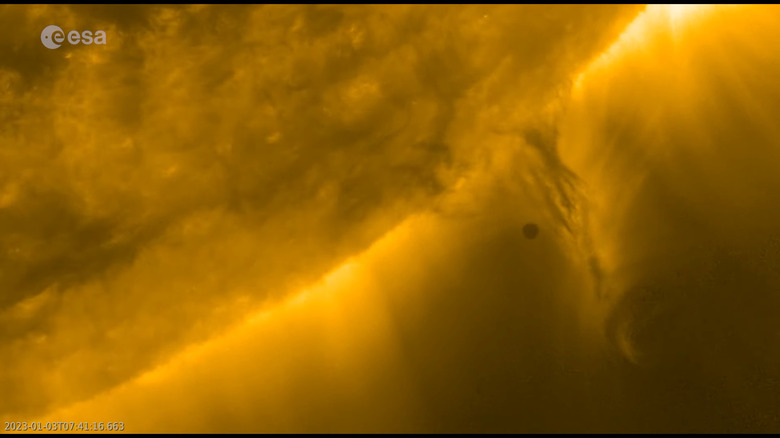Solar Orbiter Captures Spectacular Video Of Mercury Crossing The Sun
Planetary transits are a very common thing that astronomers often rely on to search for and study exoplanets. Transits can even let astronomers study the atmospheres of planets, something that we've seen recently with the James Webb space telescope. Now, the ESA and NASA's Solar Orbiter has captured a particularly interesting Mercury transit on video, giving astronomers important data.
While the video of Mercury's transit across the Sun is breathtaking. The small planet even appears as a black disk silhouetted against the bright solar star that our solar system is centered around. The data that scientists have gathered from this short recording, though, is extremely vital to the future of how we study exoplanets using the transiting method.
The video isn't just about watching Mercury pass in front of the Sun, though. The video captured by the Solar Orbiter has given us a direct view of the small planet as it passes in front of the different layers that make up the Sun's atmosphere. An atmosphere that scientists are still working hard to understand. Further, capturing the Mercury transit on video has also given scientists new data they can use to calibrate the spacecraft.
That's because when Mercury transited in front of the Sun, it created a black disk in the video. This completely black disk then allows astronomers to compensate for the point spread function, which is when the recording instrument records brightness somewhere it shouldn't. Because there should be no brightness from Mercury, scientists can analyze and hopefully remove it from future observations.
So, not only has the Solar Orbiter given us a rare video of Mercury's transit of the Sun, but it has also captured vital data that astronomers can use to improve the spacecraft, allowing us to study the Sun and other stars more reliably. The Parker Solar probe is also working to study the Sun, even going so far as to be the first spacecraft to touch the Sun's atmosphere.
